Simcenter Flotherm 2020.1: What’s new
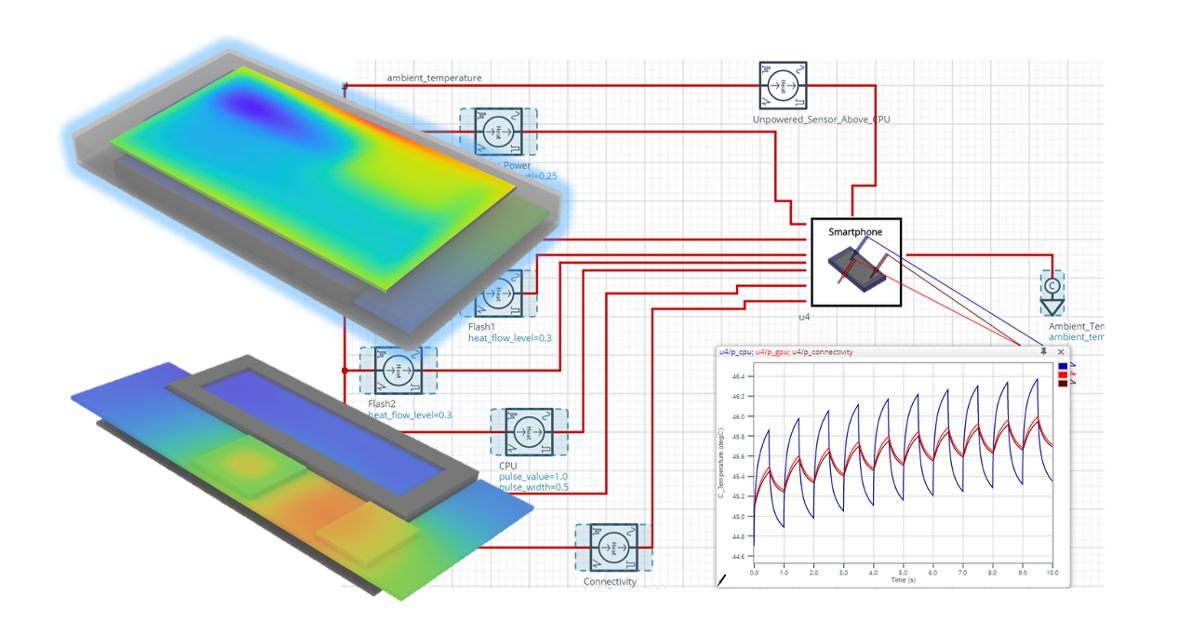
The latest release of Simcenter Flotherm 2020.1, for electronics thermal analysis has been released. Below is a brief description on the latest features and links to further information . Primarily the release includes enhanced support to generating reduced order models from full 3D electronics thermal models in 2 forms: Thermal Netlists to enable electrothermal modeling in circuit simulation tools using VHDL-AMS formats; and improving electronics thermal modeling in system level modeling tools via BCI-ROMs created in the FMU format. This release also enhances workflow efficiency with improvements to how PCB data is managed and viewed.
VHDL-AMS Thermal Netlists for electrothermal modeling in circuit simulation tools
Building on capabilities for spice format thermal netlists which circuit simulation tools can utilize for enhanced electrothermal modeling, this release includes support for VHDL-AMS format (IEEE Standard 1076.1) thermal netlists.
Please read Byron Blackmore’s detailed blog to learn more about how a thermal netlist is generated from a 3D Simcenter Flotherm thermal model, then try out a cloud based circuit simulation based smartphone example that uses a Simcenter Flotherm VHDL-AMS thermal netlist. Byron and a colleague, Mike Donnelly, also consider the thermal and electrical engineering perspectives on applying thermal netlists in electrothermal modeling.
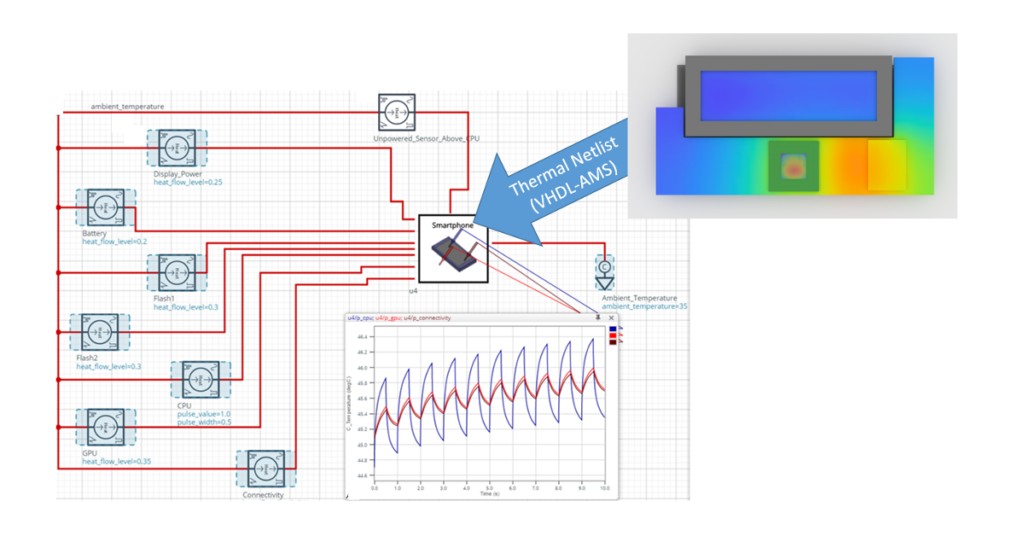
BCI-ROM export in FMU format to enhance system level modeling
Boundary Condition Independent Reduced Order Models (BCI-ROMs) in Simcenter Flotherm are generated from a full 3D conduction thermal model and provide orders of magnitude faster (often 40,000-100,000 times faster!) while maintaining close accuracy. In this release there is support for FMU format export of BCI-ROMs, which allows them to be used by 60+ tools that use the FMI standard for open sharing of simulation models. This includes 1D system simulation tools Simcenter Amesim and Simcenter Flomaster.
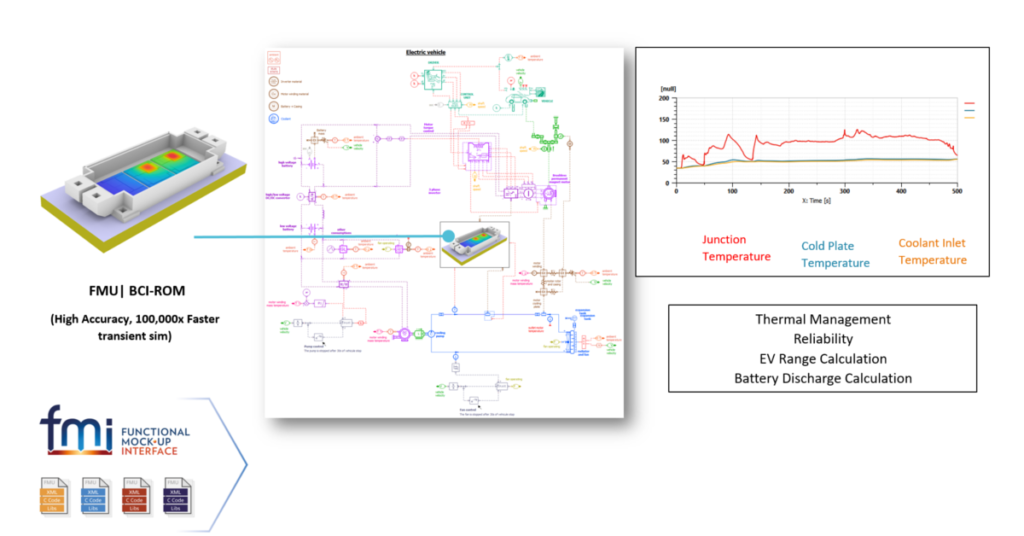
This provides opportunity for improving electronics thermal modeling fidelity within the fast solving 1D system simulation environment that is used for modeling large complex systems. One example is in power electronics systems, for applications such as electric vehicle thermal management and control modeling. If a BCI-ROM generated in FMU format of a power electronics control module containing power semiconductors including IGBTs, is used then higher accuracy modeling of power control inputs in combination with surrounding cooling system influences is possible. By enhanced prediction of critical electronics component junction temperatures during transient studies, wider exploration of the design space is enabled. This improves assessment of system performance, efficiency and reliability.
Streamlining EDA data management further
Implemented in this release is a new structure for information on boards transferred from EDA Bridge. There is a clearer, simplified project manager for better access to relevant data while the drawing board view still retains the information on components.
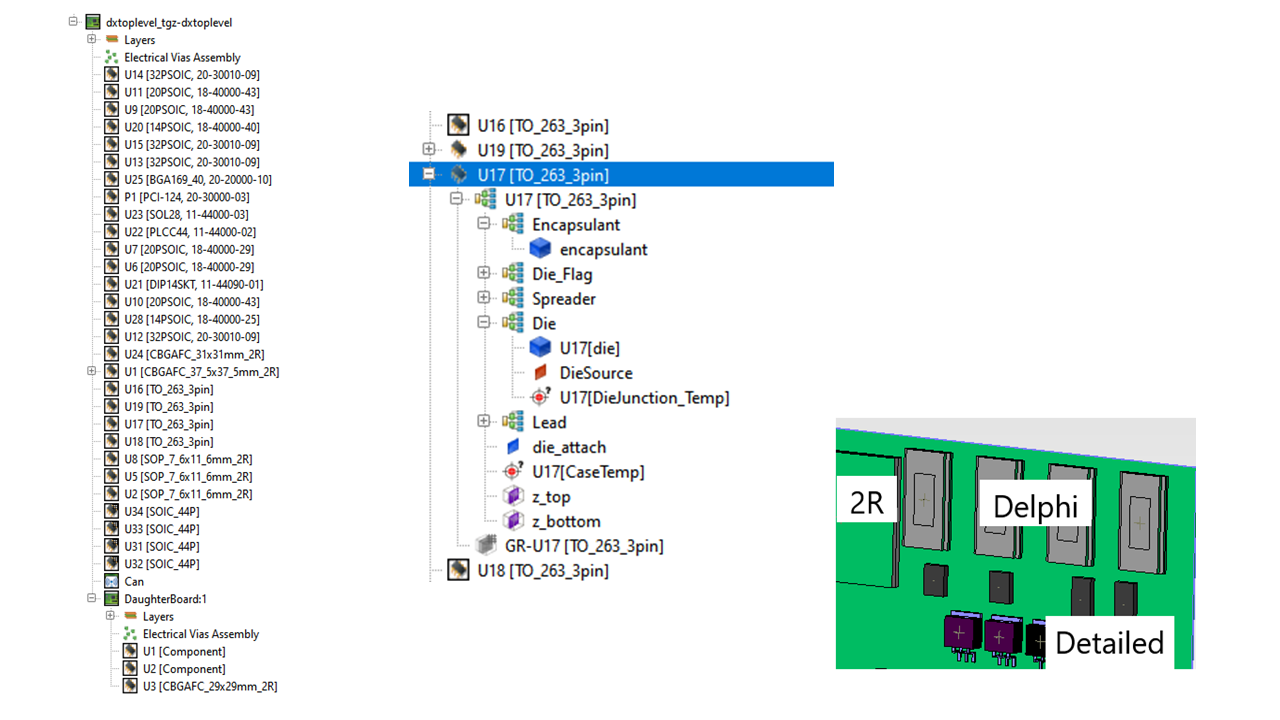
Each component has its own property sheet with entries for location, construction and attachment property sheets.
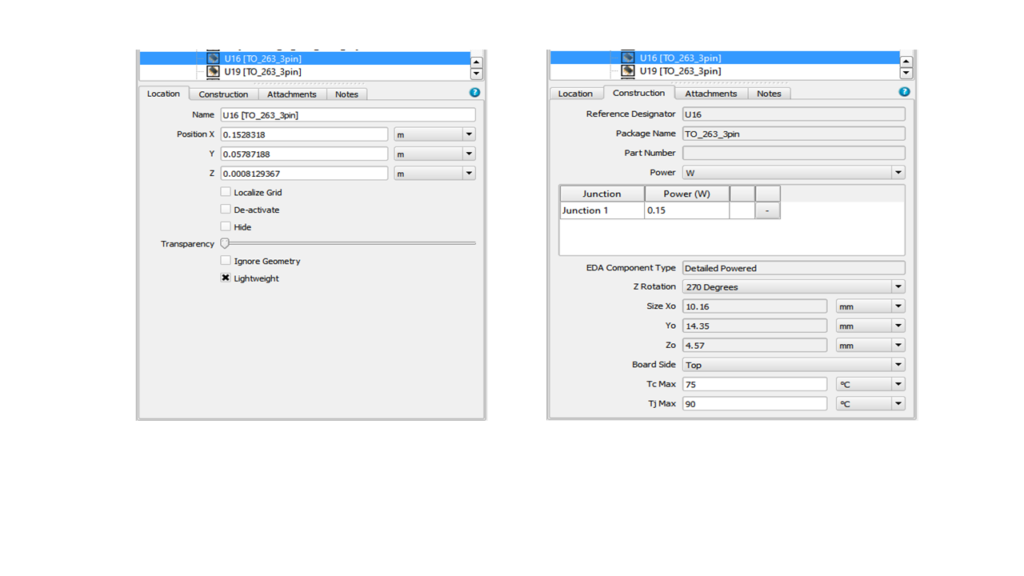
Additional parts such as heatsinks, thermal vias also have their own fields in property sheets. Daughter boards have property sheets within the motherboard structure.
There are new on demand tables for EDA Board and EDA Components with sortable columns that provide summaries of the constituents and properties in an easier to navigate format.
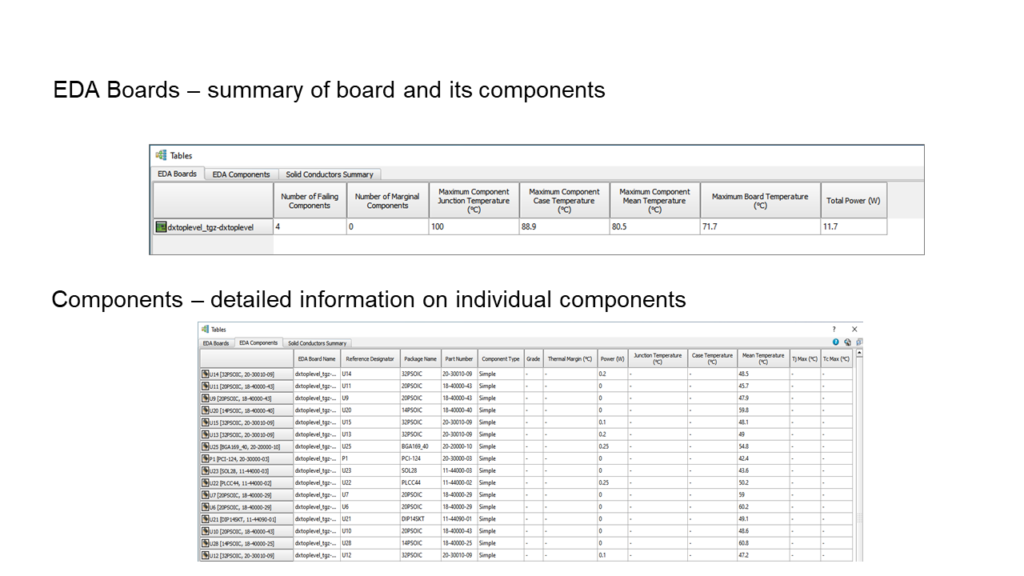
Additionally, updated find/replace capabilities allow quick location of common information in tabular format and also provides another way to quickly identify results of interest e.g to find all components have a junction temperature result above a set value.
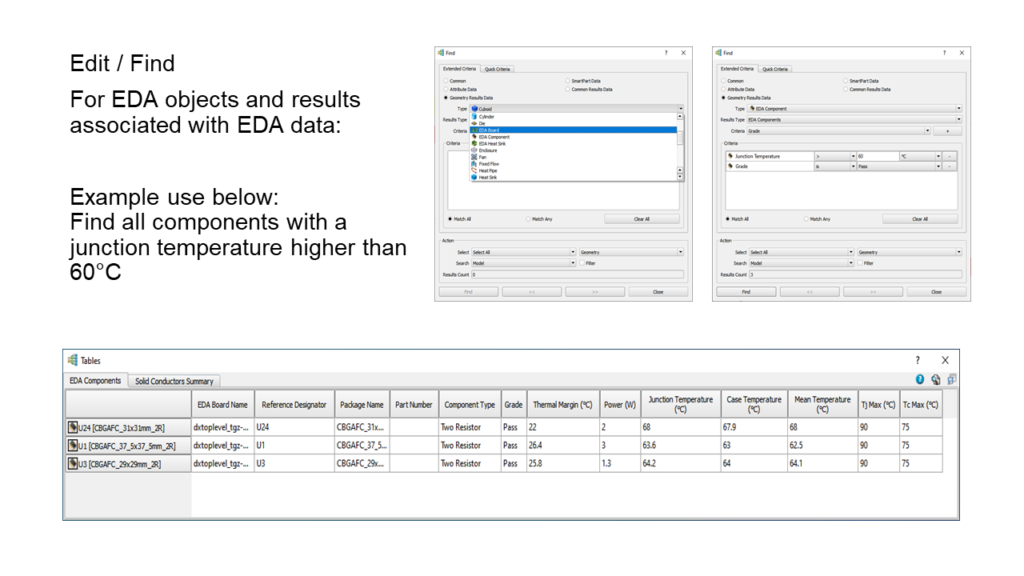
For more information on Simcenter Flotherm software releases:
For clients – please go to Siemens Support Center to download the latest Simcenter Flotherm 2020.1 version and release notes.
Also, if you missed it over the Summer, please note Simcenter Flotherm XT, CAD centric electronics cooling sister software to Simcenter Flotherm, also had a 2020.1 release – for details, please read my July blog reviewing it.


